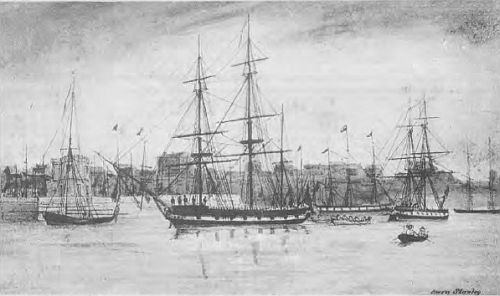- Author
- Hordern, Marsden
- Subjects
- History - pre-Federation
- Tags
-
- RAN Ships
- None noted.
- Publication
- December 1992 edition of the Naval Historical Review (all rights reserved)
Australian history is full of the exploits of her land explorers: Forrest, Hume, Cunningham, Mitchell, Eyre, Strzlecki, Sturt, Burke, Wills, Gregory, Warburton, Giles and many more. Much less is known about the seamen; Grant, Jeffreys, King, Wickham, Stokes, Kellett, Yuille, Owen Stanley, Blackwood and those who explored and surveyed Australia’s coasts. And practically nothing is known of their successors in the Royal Australian Navy; among them the hydrographers Hunt, Little, Tancred, and Bolton, who pursued their dangerous work in war under the guns of the Japanese. Our debt to the Navy is great. But for the Navy the language and institutions of this country might well have been Dutch, French, Portuguese, Spanish or Chinese. In a turbulent and overcrowded world our presence in this fortunate country constitutes an enormous debt we owe to the Navy.
Nearly 500 years ago Portuguese navigators blazed the trail from Europe round the Cape of Good Hope and across the Indian Ocean to the Orient and the Island of Spice. By 1516 they were established in Timor at our north-western gate, and at our north-eastern door the Spaniard Ferdinand Quiros discovered his Espiritus Santo in the New Hebrides. In 1605 Dutchman Willem Jansz probed eastward from Java to the Gulf of Carpentaria. In 1616 Dirk Hartog, and later Tasman, Dampier and Vlaming left their marks upon the desolate land they called ‘New Holland’.
In 1768, two years before Cook discovered New South Wales, Frenchman Louis Antoine de Bougainville, rolling westward across the Coral Sea, may have sighted thundering surf on the Great Barrier Reef, and in 1772, two years after Cook, Bougainville’s compatriot St Allouarn, landed near Shark Bay to claim that tract of coast for France.
Any of these western nations in the 250 years before Cook might have found fertility and colonised the country, and for centuries before the coming of the Europeans the land lay open to questing Arab dhows, Chinese junks and Malay praus which roamed the Eastern seas, but if they came, none stayed. Our inheritance here today stems from the Navy and Captain Cook, and was secured for us by another Naval Officer in 1805.
If Lord Nelson had not commanded at Trafalgar the great sea power of France and Spain may not have been destroyed there. Before Trafalgar, France had cast covetous eyes at England’s possessions in the east. Between 1800 and 1803 the French Nicholas Baudin led an expedition to our shores which charted large sections of Australia’s coast, showering it with French names, On Louis de Freycinet’s chart, the titles ‘Terre Napoleon’, ‘Golfe Bonaparte’ and ‘Golfe Josephine’ given to features on our south coast, tell their own story. But after the Royal Navy had wrested Admiralty from the French, Britain ruled the seas and could deny her enemies new empires in the east. Even after Trafalgar and as late as 1810, Napoleon, still dreaming of eastern dominions, began fitting out a powerful squadron for aggressive action in the Indian Ocean with instructions to ‘take the English colony at Port Jackson … where considerable resources will be found’.1
But British sea power put paid to those hopes and the squadron never saw the Indian Ocean.
Then for nearly a century the Navy kept the Pax Britannica, and under that powerful shield Britain’s hydrographers went to war with the seas itself, disarming its hidden dangers by revealing them.
From 1829 the moving spirit which planned and brooded over their work was that of Captain Francis Beaufort, hydrographer of the Royal Navy. Beaufort exuded an intellectual power which towered above imagined status, position, wealth or degree and fearlessly pursued the truth. From 1829 for 25 years he dominated the world of hydrography.
This remarkable, charming and deeply religious officer who had seen much hard and dangerous service, came to the Hydrographic Office when it was insignificant and at a time in life when most men today retire. He continued on there for quarter of a century, produced excellent charts from the four corners of the earth, and raised his department to a point of excellence where it became the envy and inspiration of other maritime nations. Captain Beaufort was to his men in the field a demanding perfectionist, father figure, guide, philosopher and friend.

Watercolour by Owen Stanley, whose name was given to the ranges in New Guinea.




